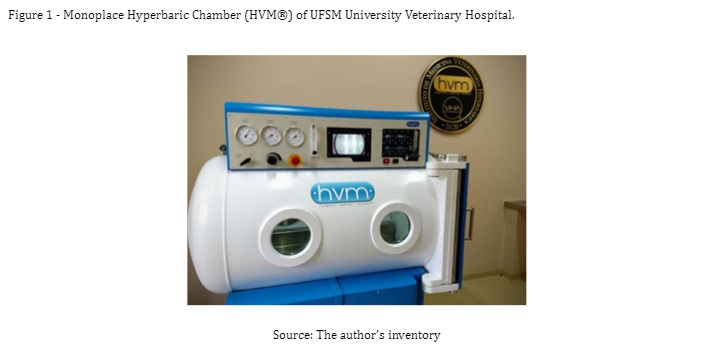Does hyperbaric oxygen therapy positively change organic dysfunctions in bitches with sepsis caused by cystic endometrial hyperplasia-pyometra
DOI:
https://doi.org/10.21708/avb.2024.18.1.12321Resumen
Experimental models have shown positive outcomes associated with hyperbaric oxygen therapy (HO) when it comes to reducing mortality rates in sepsis patients. The aim of the present study is to assess HO impact on the microperfusion of sepsis bitches with Cystic Endometrial Hyperplasia-Pyometra (CEH-P) based on SOFA SCORE (Sequential Organ Failure Assessment) to quantify and monitor organic dysfunction degree. Eight (8) bitches diagnosed with CEH-P were included in the study; they were randomly split into two groups: G1 (ovariohysterectomy + clinical therapy) and G2 (ovariohysterectomy + clinical therapy + HO). All bitches in G2 were subjected to three HO sessions, at 24-h time interval between sessions. All animals showed at least one organic dysfunction due to sepsis. Animals in G2 presented significant improvement in clinical conditions and initial 51% reduction in SOFA scoring. On the other hand, animals in G1 recorded 29% reduction in this variable. Hyperbaric therapy was effective in reducing bitches’ organic dysfunction with sepsis caused by CEH-P; however, it did not have significant reflex on Central Venous Oxygen Saturation (SvcO2).
Descargas

Descargas
Publicado
Número
Sección
Licencia
Derechos de autor 2024 Acta Veterinaria Brasilica

Esta obra está bajo una licencia internacional Creative Commons Atribución 4.0.
Autores que publicam na Acta Veterinaria Brasilica concordam com os seguintes termos: a) Autores mantém os direitos autorais e concedem à revista o direito de primeira publicação, com o trabalho simultaneamente licenciado sob a Licença Creative Commons Attribution que permite o compartilhamento do trabalho com reconhecimento da autoria e publicação inicial nesta revista. b) Autores têm autorização para assumir contratos adicionais separadamente, para distribuição não-exclusiva da versão do trabalho publicada nesta revista (ex.: publicar em repositório institucional ou como capítulo de livro), com reconhecimento de autoria e publicação inicial nesta revista. c) Autores têm permissão e são estimulados a publicar e distribuir seu trabalho online (ex.: em repositórios institucionais ou na sua página pessoal) a qualquer ponto antes ou durante o processo editorial, já que isso pode gerar alterações produtivas, bem como aumentar o impacto e a citação do trabalho publicado (Veja O Efeito do Acesso Livre).


 Esta obra está licenciada com uma Licença
Esta obra está licenciada com uma Licença 